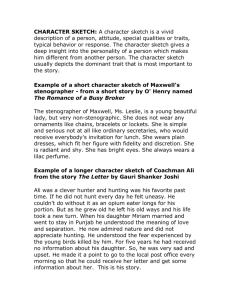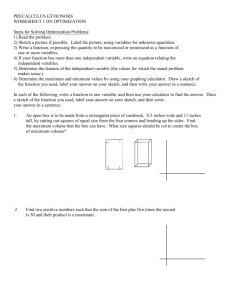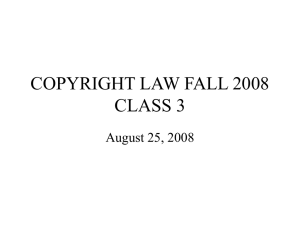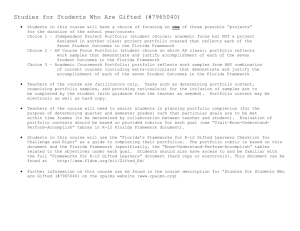Karen has just found a solid gold key in her back yard
advertisement
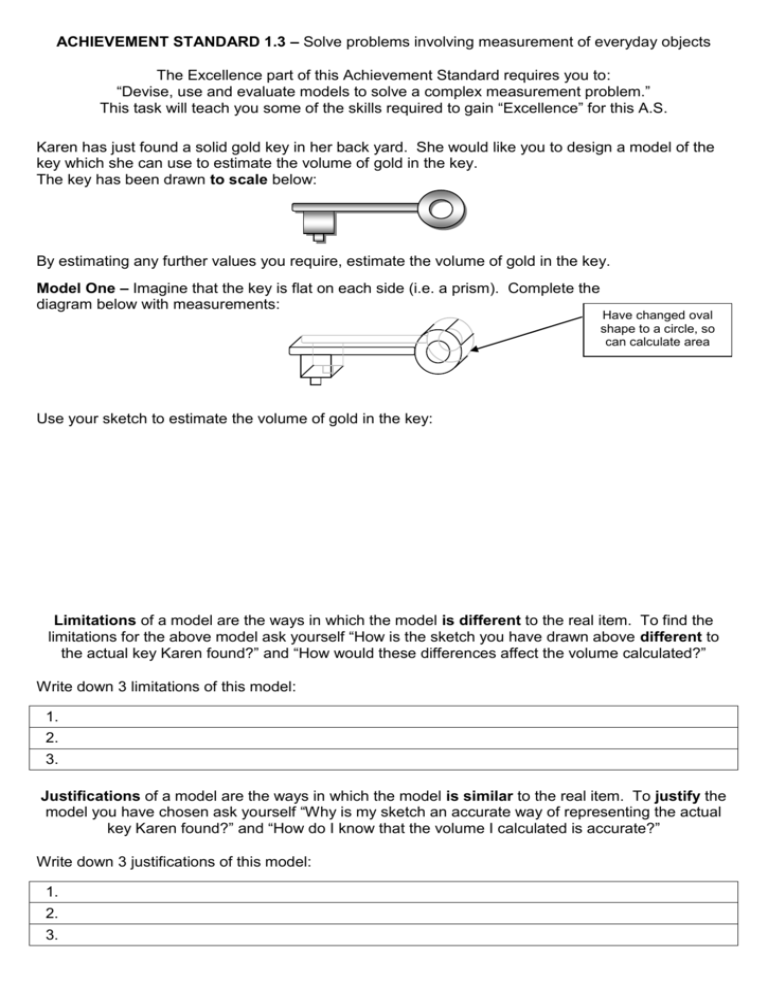
ACHIEVEMENT STANDARD 1.3 – Solve problems involving measurement of everyday objects The Excellence part of this Achievement Standard requires you to: “Devise, use and evaluate models to solve a complex measurement problem.” This task will teach you some of the skills required to gain “Excellence” for this A.S. Karen has just found a solid gold key in her back yard. She would like you to design a model of the key which she can use to estimate the volume of gold in the key. The key has been drawn to scale below: By estimating any further values you require, estimate the volume of gold in the key. Model One – Imagine that the key is flat on each side (i.e. a prism). Complete the diagram below with measurements: Have changed oval shape to a circle, so can calculate area Use your sketch to estimate the volume of gold in the key: Limitations of a model are the ways in which the model is different to the real item. To find the limitations for the above model ask yourself “How is the sketch you have drawn above different to the actual key Karen found?” and “How would these differences affect the volume calculated?” Write down 3 limitations of this model: 1. 2. 3. Justifications of a model are the ways in which the model is similar to the real item. To justify the model you have chosen ask yourself “Why is my sketch an accurate way of representing the actual key Karen found?” and “How do I know that the volume I calculated is accurate?” Write down 3 justifications of this model: 1. 2. 3. Model Two – Use 3-D shapes to model the key (e.g. cuboids, cylinders, prisms etc). Sketch a diagram below: Use your sketch to estimate the volume of gold in the key: Write down 3 limitations of this model: 1. 2. 3. Write down 3 justifications of this model: 1. 2. 3. Homework Tasks: 1. Which model do you think is more accurate? Give reasons for your answer 2. What other 3-D shapes could you use to model the key. Use these shapes to estimate the volume. Write down 3 limitations and 3 justifications for this model. A few merit questions to practice on: 1. Convert the volume of the key into cm3. 2. Convert the volume of the key into m3. 3. If the key was dropped into a bowl of water, how many millilitres of water would it displace? 4. If gold weighs 6 grams per cm3 what would the key weigh? 5. The value of gold is $75 per kg. How much is the gold in the key worth? 6. How many keys would it take to make Karen a millionaire? 7. How much would the number of keys from Question 6 weigh in tonnes? 8. What are the limits of accuracy for the length of the key? 9. What are the limits of accuracy for the diameter of the barrel of the key? 10. What are the limits of accuracy for the area of the end of the key (the two rectangles)?* Design a padlock which the key might have come from: Some designs to help you: Sketch your design below. You should use at least two different 3-D shapes in your design. Use your design to estimate the volume of your padlock. Show all your working. Write down 3 limitations of your model below: 1. 2. 3. Write down 3 justifications of your model below: 1. 2. 3. Some more modelling tasks to try. Remember to give the limitations and justifications for each. 1. Design a model which can be used to estimate the volume of wood in the stool below: 4. Design a model to estimate the amount of gold in the crown below. Assume the crown could fit your own head, and is 7cm high. 2. Design a model which could be used to estimate the surface area of the chapel below so that the correct amount of paint can be purchased: 5. Design a model to estimate how much material you would need to make a teddy bear similar to the one in the diagram? Assume the bear is the height and width of an A4 page. 3. Design a model to estimate the amount of stone in the Japanese lantern. The lantern is 7m high. 6. Design a model which could be used to estimate how much wood would be required to build this toy train. Assume that it is 10 cm high and between 15 and 30cm long.




